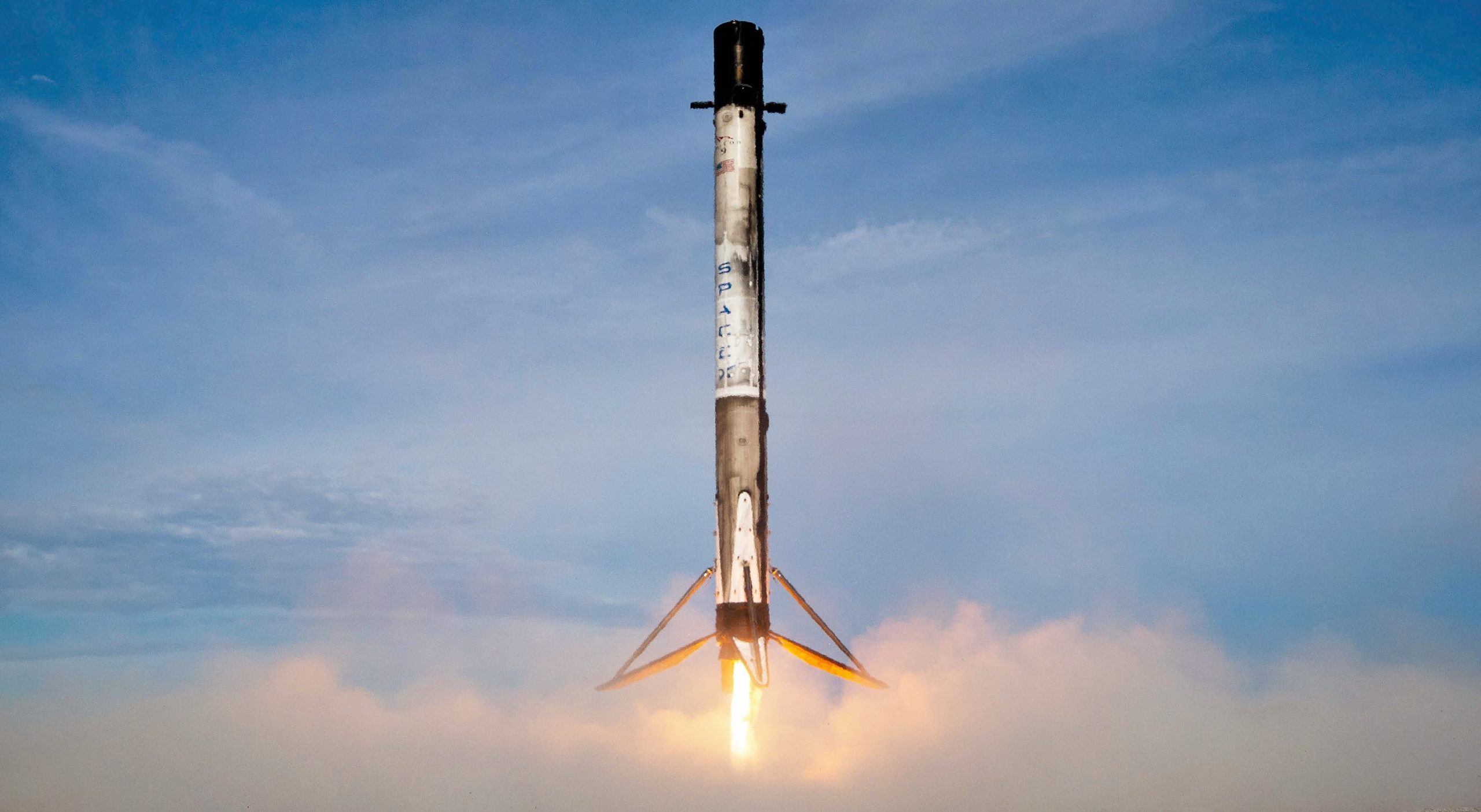
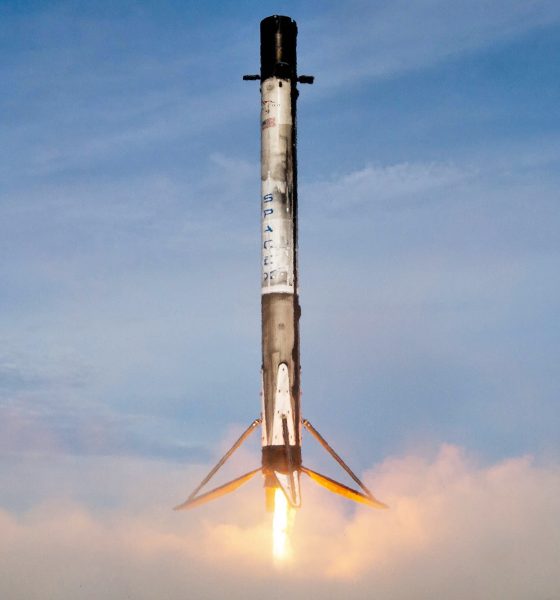
News
SpaceX Falcon 9 fires up ahead of second to last 2019 launch and landing
SpaceX has successfully static fired a Falcon 9’s booster engines ahead of its second to last launch and landing of 2019, on track to make December the company’s busiest month of the year.
About a month after successfully lofting 60 Starlink satellites and 11 days after sending Cargo Dragon on its way to the ISS for CRS-19, SpaceX has two more launch scheduled in 2019: Kacific-1 no earlier than (NET) December 16th and Starlink-2 NET December 30th.
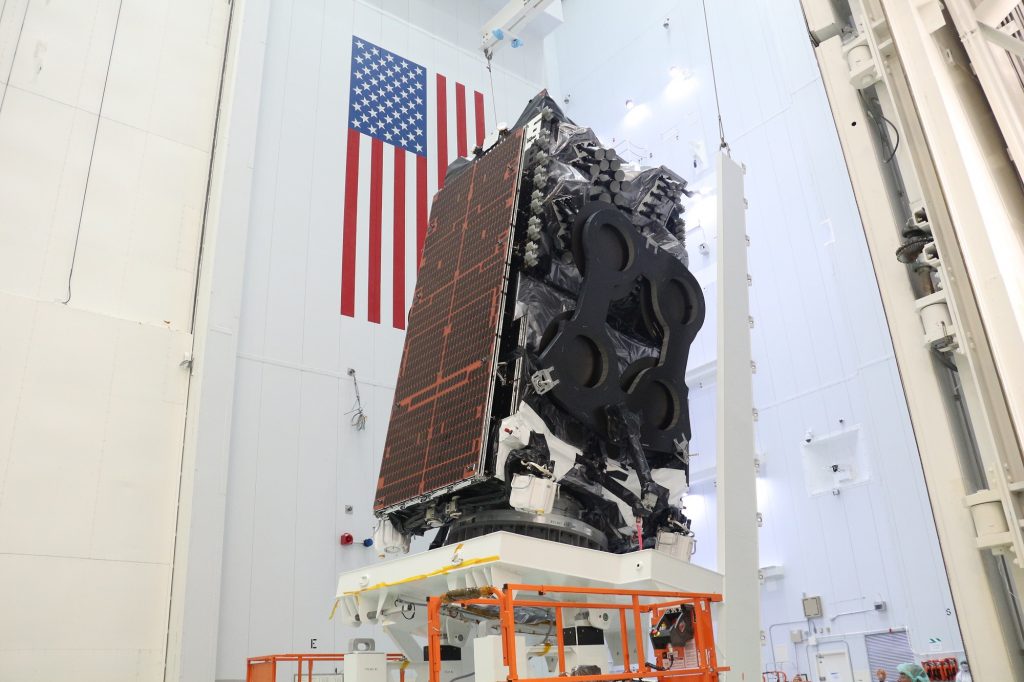
For SpaceX, the turn of the decade will mark the end of an historic year – let alone decade – of milestones for the intrepid commercial space company, including achievements like’s Crew Dragon flawless orbital launch debut, the fourth flight of a refurbished Falcon 9 booster, the first-ever reuse of a flight-proven payload fairing, and a duo of spectacular Starhopper flight tests to name just a few.
First up, SpaceX will fly twice-flown Falcon 9 booster B1056.3 for the third time. B1056.3 previously supported CRS-17 and CRS-18, back to back Cargo Dragon space station resupply missions for NASA. Currently targeting a Monday, December 16th launch, SpaceX is set to place the jointly-owned JCSAT-18/Kacific-1 broadband communication satellite for Japan’s Sky Perfect JSAT Corp. and Singapore’s self-proclaimed “next-generation broadband satellite operator”, Kacific Broadband Satellites.
According to a Kacific, after deploying from Falcon 9 and circularizing into a geostationary orbit some 22,000 miles (36,000km) over the Asia-Pacific region, the JCSAT-18/Kaficic-1 satellite “will stream broadband to 25 nations in South East Asia and the Pacific Islands via 56 spot beams.” All told, the satellite will offer a maximum bandwidth of 70 gigabits per second (Gbps) with each spot beam serving up to 1.25 Gbps.
Kacific was founded in 2013 by CEO Christian Patouraux to provide desperately needed communication services to the Asia Pacific region, “where high prices and unsuitable technology were prohibiting access.” Kacific looks to “provide high speed, affordable and accessible internet to extra-urban, rural, and remote users” with Kacific-1, the company’s first (partially) dedicated satellite.
Ahead of Monday’s launch attempt, the JCSAT-18/Kacific-1 satellite was fully encapsulated inside Falcon 9’s payload fairing, both halves of which SpaceX will try to catch with recovery vessels GO Ms. Tree and GO Ms. Chief in what will be the company’s first simultaneous catch attempt ever. Meanwhile, B1056 has its own recovery attempt penciled in and drone ship Of Course I Still Love You (OCISLY) departed Port Canaveral on December 12th, headed ~650 km (400 mi) downrange. OCISLY arrived at its recovery zone earlier today, as did Ms. Tree and Ms. Chief, now stationed about 140 km (90 mi) further East.
As per usual, Falcon 9 B1056.3 and its expendable upper stage performed a wet dress rehearsal (WDR) and static fire, identical to launch operations minus the rocket actually lifting off. The Kacific-1 mission’s December 16th launch trajectory allows for an 88-minute window from 7:10 pm – 8:38 pm EST (0010-0138 UTC, December 17) and weather forecasts are currently 90% go.
As mentioned, twin fairing recovery vessels GO Ms. Tree and GO Ms. Chief departed Port Canaveral on December 13th in a bid to attempt their first simultaneous Falcon fairing recovery, meaning that each ship will attempt to catch one parasailing fairing half. This mission is technically the second time both ships have port left together for a recovery, but their first whole-airing catch attempt was called off before it could start due to rough seas and high winds in the Atlantic Ocean. Prior to being rechristened Ms. Tree, Mr. Steven suffered severe damage during a planned February 2019 catch attempt, losing its net and two of four arms after the ship was caught in high seas.

Following Kacific-1, SpaceX’s final launch of 2019 – barring delays – will likely be the company’s second dedicated Starlink v1.0 mission, a 60-satellite payload that will almost certainly make SpaceX the world’s largest commercial satellite operator. Starlink-2 is scheduled to launch NET December 30th.
SpaceX will stream Falcon 9’s Kacific-1 launch and landing and the webcast will kick off some 15 minutes before liftoff, NET 6:55 pm ET (23:55 UTC), December 16th.
Check out Teslarati’s newsletters for prompt updates, on-the-ground perspectives, and unique glimpses of SpaceX’s rocket launch and recovery processes.

Elon Musk
SpaceX maintains unbelievable Starship target despite Booster 18 incident
It appears that it will take more than an anomaly to stop SpaceX’s march towards Starship V3’s refinement.

SpaceX recently shared an incredibly ambitious and bold update about Starship V3’s 12th test flight.
Despite the anomaly that damaged Booster 18, SpaceX maintained that it was still following its plans for the upgraded spacecraft and booster for the coming months. Needless to say, it appears that it will take more than an anomaly to stop SpaceX’s march towards Starship V3’s refinement.
Starship V3 is still on a rapid development path
SpaceX’s update was posted through the private space company’s official account on social media platform X. As per the company, “the Starbase team plans to have the next Super Heavy booster stacked in December, which puts it on pace with the test schedule planned for the first Starship V3 vehicle and associated ground systems.”
SpaceX then announced that Starship V3’s maiden flight is still expected to happen early next year. “Starship’s twelfth flight test remains targeted for the first quarter of 2026,” the company wrote in its post on X.
Elon Musk mentioned a similar timeline on X earlier this year. In the lead up to Starshp Flight 11, which proved flawless, Musk stated that “Starship V3 is a massive upgrade from the current V2 and should be through production and testing by end of year, with heavy flight activity next year.” Musk has also mentioned that Starship V3 should be good enough to use for initial Mars missions.
Booster 18 failure not slowing Starship V3’s schedule
SpaceX’s bold update came after Booster 18 experienced a major anomaly during gas system pressure testing at SpaceX’s Massey facility in Starbase, Texas. SpaceX confirmed in a post on X that no propellant was loaded, no engines were installed, and personnel were positioned at a safe distance when the booster’s lower section crumpled, resulting in no injuries.
Still, livestream footage showed significant damage around the liquid oxygen tank area of Booster 18, leading observers to speculate that the booster was a total loss. Booster 18 was among the earliest vehicles in the Starship V3 series, making the failure notable. Despite the setback, Starship V3’s development plans appear unchanged, with SpaceX pushing ahead of its Q1 2026 test flight target.
News
Tesla Sweden faces fresh union blockade at key Gothenburg paint shop
Allround Lack works with painting and damage repair of passenger cars, including Teslas.
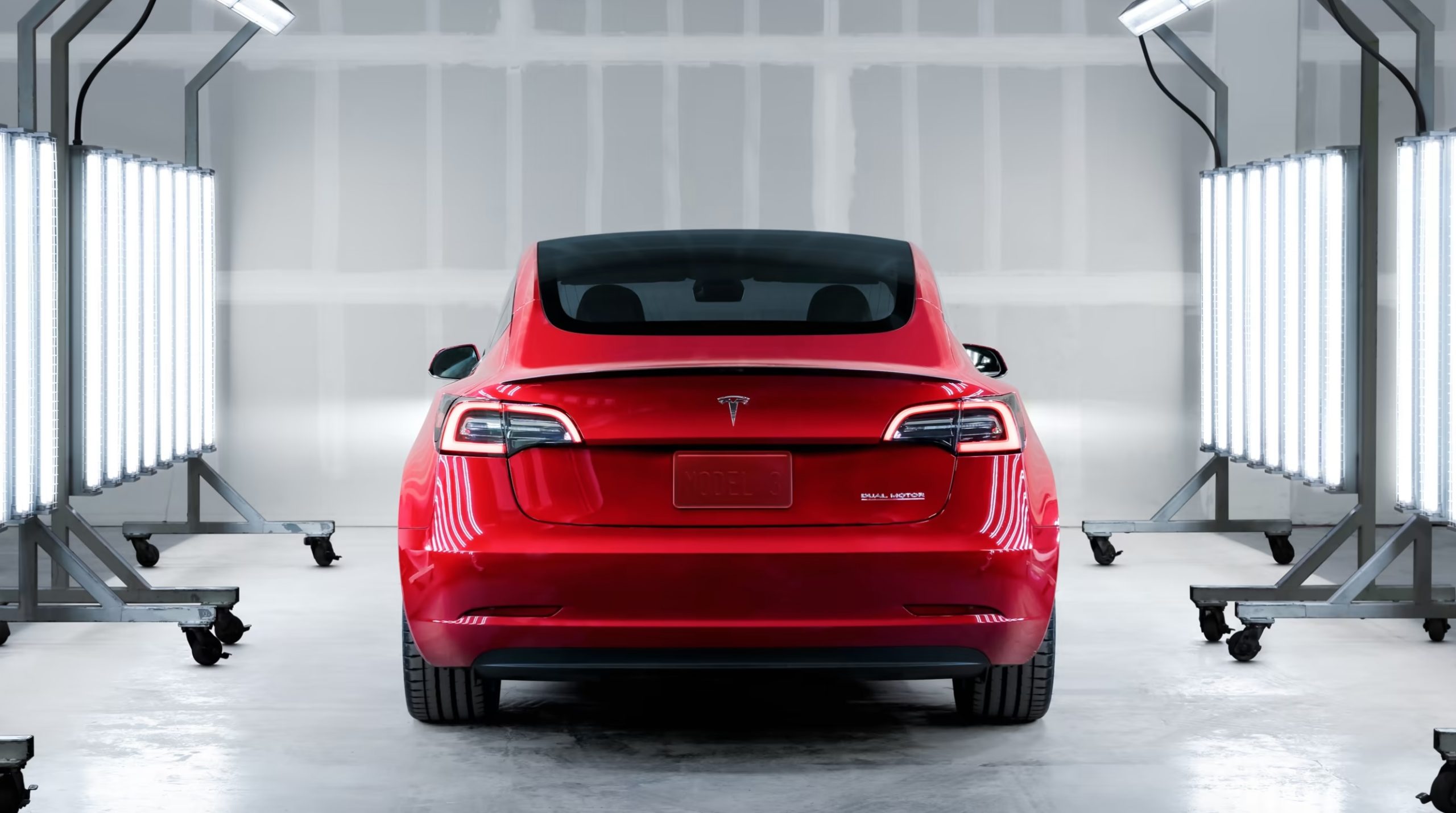
Tesla’s ongoing labor conflict in Sweden escalated again as the trade union IF Metall issued a new blockade halting all Tesla paintwork at Allround Lack in Gothenburg.
Allround Lack works with painting and damage repair of passenger cars, including Teslas. It currently employs about 20 employees.
Yet another blockade against Tesla Sweden
IF Metall’s latest notice ordered a full work stoppage for all Tesla-related activity at Allround Lack. With the blockade in place, paint jobs on Tesla-owned vehicles, factory-warranty repairs, and transport-damage fixes, will be effectively frozen, as noted in a report from Dagens Arbete. While Allround Lack is a small paint shop, its work with Tesla means that the blockade would add challenges to the company’s operations in Sweden, at least to some degree.
Paint shop blockades have been a recurring tool in the longstanding conflict. The first appeared in late 2023, when repair shops were barred from servicing Tesla vehicles. Days later, the Painters’ Union implemented a nationwide halt on Tesla paint work across more than 100 shops. Since then, a steady stream of workshops has been pulled into the conflict.
Earlier blockades faced backlash from consumers
The sweeping effects of the early blockades drew criticism from industry groups and consumers. Employers and industry organization Transportföretagen stated that the strikes harmed numerous workshops across Sweden, with about 10 of its members losing about 50% of their revenue.
Private owners also expressed their objections. Tibor Blomhäll, chairman of Tesla Club Sweden, told DA in a previous statement that the blockades from IF Metall gave the impression that the union was specifically attacking consumers. “If I get parking damage to my car, I pay for the paint myself. The company Tesla is not involved in that deal at all. So many people felt singled out, almost stigmatized. What have I done as a private individual to get a union against me?” Blomhäll stated.
In response to these complaints, IF Metall introduced exemptions, allowing severely damaged vehicles to be repaired. The union later reopened access for private owners at workshops with collective agreements. The blockades at the workshops were also reformulated to only apply to work that is “ordered by Tesla on Tesla’s own cars, as well as work covered by factory warranties and transport damage on Tesla cars.”
News
Tesla breaks Norway’s all-time annual sales record with one month to spare
With November alone delivering 4,260 new registrations, Tesla has cemented its most dominant year ever in one of Europe’s most mature EV markets.
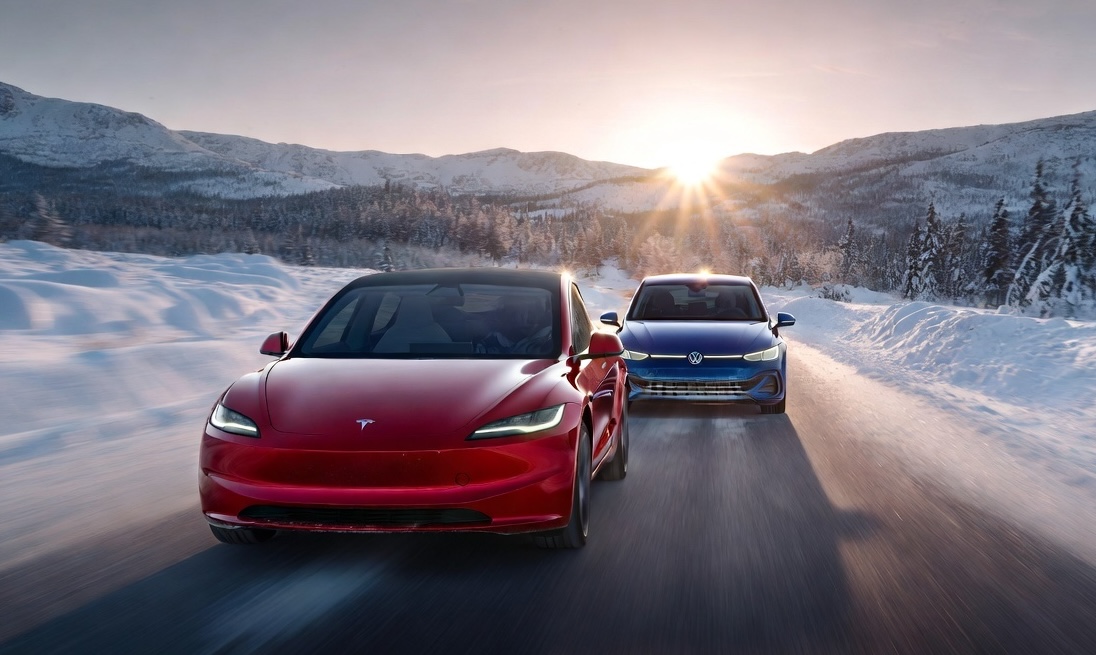
Tesla shattered Norway’s decade-old annual sales record this month, overtaking Volkswagen’s long-standing milestone with over one month still left in the year. Backed by surging demand ahead of Norway’s upcoming VAT changes, Tesla has already registered 26,666 vehicles year-to-date, surpassing Volkswagen’s 2016 record of 26,572 units.
With November alone delivering 4,260 new registrations month-to-date, Tesla has cemented its most dominant year ever in one of Europe’s most mature EV markets.
Model Y drives historic surge in Norway
Tesla’s impressive momentum has been led overwhelmingly by the Model Y, which accounted for 21,517 of Norway’s registrations this year, as noted in a CarUp report, citing data from Elbil Statistik. The Model 3 followed with 5,087 units, while the Model S and Model X contributed 30 and 19 vehicles, respectively. Even the parallel-imported Cybertruck made the charts with 13 registrations.
Demand intensified sharply through autumn as Norwegian buyers rushed to secure deliveries before the country’s VAT changes take effect in January. The new regulation is expected to add roughly NOK 50,000 to the price of a Model Y, prompting a wave of early purchases that helped lift Tesla beyond the previous all-time record well before year-end.
With December still ahead, Tesla is positioned to extend its historic lead further. Needless to say, it appears that Norway will prove to be one of Tesla’s strongest markets in Europe.
FSD could be a notable demand driver in 2026
What’s especially interesting about Tesla’s feat in Norway is that the company’s biggest selling point today, Full Self-Driving (Supervised), is not yet available there. Tesla, however, recently noted in a post on X that the Dutch regulator RDW has reportedly committed to issuing a Netherlands national approval for FSD (Supervised) in February 2026.
The RDW posted a response to Tesla’s post, clarifying the February 2026 target but stating that FSD’s approval is not assured yet. “The RDW has drawn up a schedule with Tesla in which Tesla is expected to be able to demonstrate that FSD Supervised meets the requirements in February 2026. RDW and Tesla know what efforts need to be made to make a decision on this in February. Whether the schedule will be met remains to be seen in the coming period,” the RDW wrote in a post on its official wesbite.
If FSD (Supervised) does get approved next year, Tesla’s vehicles could gain a notable advantage over competitors, as they would be the only vehicles on the market capable of driving themselves on both inner-city streets and highways with practically no driver input.








